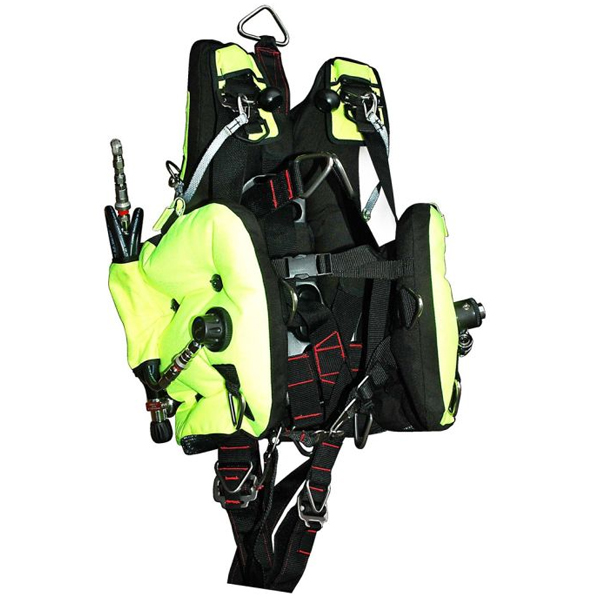Mark IV Jump Jacket
Description
The AP Jump Jacket, developed in 1994, has transformed commercial diving with its focus on diver safety, productivity, and efficient work-site transitions.
In collaboration with Garry Jones, a seasoned North Sea sat-diver, the AP Jump Jacket was originally developed in 1994. Since then, it has been an indispensable tool in commercial off-shore operations for over 25 years. The latest iteration, the Mark IV, brings forth remarkable advancements for the commercial market, driven by two primary objectives:
- Enhancing Diver Safety
- Boosting Productivity
The Mark IV BCD has been meticulously crafted to cater specifically to surface supply diving, encompassing both air and mixed gas applications. What sets it apart from other commercial BCDs is its comprehensive integration of a full recovery diving harness, a safety harness to secure the helmet, and a bailout backpack.
Safety and efficiency take centre stage in this design, allowing divers to navigate underwater with enhanced flexibility and without exhausting their energy levels.
Key Advantages of the Mark IV:
Complete Control of Buoyancy and Diver Mobility:
The Mark IV empowers divers to achieve neutral buoyancy, slightly positive buoyancy, or slightly negative buoyancy, enabling them to approach work sites seamlessly from the diving bell.
Prior to the advent of the Jump Jacket, significant time was wasted as surface support repositioned the bell to the next work site. However, with neutral buoyancy capabilities, divers can now swim or “jump” to the next location without necessitating the movement of the bell.
The Mark IV ensures total buoyancy control, unmatched comfort, and remarkable diver mobility, facilitating direct approaches to work sites and offering improved freedom of movement on-site.
Time-Saving Efficiency:
By eliminating the need for the diving bell to relocate after each work site, the Mark IV allows for significant time savings. Divers can seamlessly transition between locations, optimizing their productivity and minimizing downtime.


